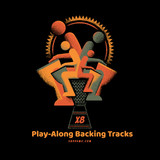Therapeutic Effects of the Didgeridoo
The didgeridoo is an instrument that captivates attention no matter where it is encountered. Native to the aboriginal people of Australia, the didgeridoo emits a mystical sound that is easily recognizable. But, the instrument is not easily played by just anyone. Aficionados must use a special circular breathing technique in order to produce the mesmerizing drone and it can take a lot of practice and dedication to get it right. The results are well worth the effort, though. Circular breathing is reputed to result in many health benefits and that is helping didge therapy become a popular topic among healing practitioners.
Didgeridoo, or didge, therapy has partially resulted from medical studies about circular breathing. Playing the instrument has been proven to reduce sleep apnea, snoring, and daytime sleepiness. This benefit to sleepers is largely due to the effect of higher oxygen levels in the blood and practicing the steady breathing rhythm required to play the instrument. Musicians have long acknowledged the feelings of satisfaction and wellness that come from playing the didgeridoo and those feelings have now become a main draw for didge therapy.
Circular breathing is not necessarily easy to learn, but its benefits are time-honored. Taoists have traditionally practiced the breathing technique, as well, knowing that it resulted in more energy, better circulation, and lower stress levels. This is primarily because the technique helps oxygenate the blood and oxygen is known to produce many health benefits. Didge therapy involves more than simply improving the way people breathe, though.
Another use of the didgeridoo in didge therapy is to use the vibrations and tones produced by the instrument to heal people. Gregg Chapman has combined alternative healing modalities and the inherent health-promoting qualities of playing the didgeridoo to help people overcome pain, stress, anxiety, and lack of focus. This new healing method is gaining popularity as more alternative practitioners and musicians learn about it.
In some cases, the didgeridoo is not played by the person hoping to benefit from the instrument’s use. Some practitioners may use the instrument similar to a smudging session, playing the instrument for the other person and deciphering issues the person is experiencing. Used this way, the resonance of the sounds produced by the instrument helps heal the listener. This is a form of sound therapy and demonstrates how didgeridoo therapy can be used in a variety of ways to benefit both listeners and players.

Didge therapy is relatively new but is being embraced by various alternative healers and therapists. Anyone who has played the didgeridoo understands the calming, relaxing effect the instrument has on both listeners and players, alike. Able to affect both outer vibration and inner circulation, we are sure to see more didge therapy practitioners in the near future.
Recent Posts
-
X8 Drums Play-Along Backing Tracks
The new X8 Play-Along Series is being produced for our musician friends wanting a fresh way to work …9th Feb 2025 -
What is the Best Size Djembe for Beginners?
If you're new to the world of percussion and interested in learning the djembe, you're in for a t …16th Jul 2024 -
The Benefits of Becoming a Drumming Teacher: Transforming Passion into Profession
Why become a drumming teacher? Becoming a drumming teacher is an excellent way to share your pas …22nd May 2024




